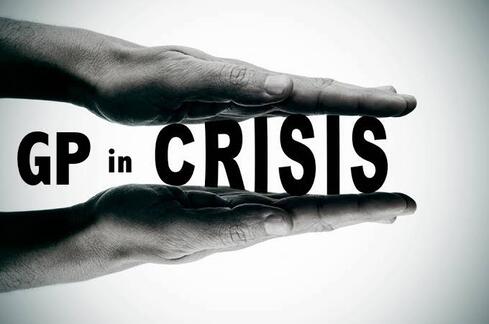|
Dr Ayman Shenouda Despite having had the best policy intentions, we still have too many specialists, and too few general practitioners. The policy response has led to an unprecedented supply of junior doctors feeding a training crisis that will take many years to resolve. Here I’d like to share some ideas around how we can deliver a training model that prioritises need. Making general practice more attractive Ensuing graduates meet the needs of the community requires a new training model and approach. It’s time for a rethink. If we are going to address general practice recruitment, we first need to deal with our image problem. We need to stop general practice from being a second choice. To do this we need to work through the problems in recruitment and this means doing thing very differently. In making general practice a specialty of choice – we need to impart an early positive image which can then be backed by positive experience. Key to making this work is having more control as a specialty in ensuring exposure during those prevocational years. Lost in the prevocational space In increasing its attractiveness as a career choice for junior doctors we need to increase the status of generalism at all stages of medical education and training. It’s clear we are losing them in the prevocational space. It comes down to sufficiency of exposure to general practice and the need for specialty control at that point. In getting them this exposure – which is currently intermittent – postgraduate medical curriculums need more focus on general practice and rural health. While there are now new programs to direct our efforts – the Hubs, RJDTIF and more recently through MDRAP - it is the uncoordinated decision making that will continue to limited our success. The prevocational years remain problematic due to differing state arrangements dominated by hospital need and an underlying lack of ownership. The only consistency through the layers of complexity is the trainee. The funding needs to follow the trainee but we need to build in incentives to retain them on a specific pathway. A collaborative approach led by the colleges of general practice and all organizations involved in those programs is urgently needed There is also a need to formalise a supportive structure through funding the relationship between the trainee and the GP Colleges. This would support a key shift in establishing the relationship earlier, focusing on early identification and continuous support. It provides for the much-needed connection to general practice throughout prevocational and into vocational general practice training. Remuneration is also important GPs are overworked, undervalued and underpaid. We know that expected future earnings influence specialty choice with many choosing general practice following rejection of another specialty. In attracting more to general practice, we need to be able to compete with the higher earing specialties. The way we are paying registrars also needs to be reviewed. GP job satisfaction is also falling which further impacts on GP recruitment and retention.[i] The solution lies in the need to reform the funding model to prioritise primary care and generalism. Funding for general practice The current system devalues primary care. The government needs to be thinking seriously about funding for general practice. Income growth is impacted by decisions around incentives, the prolonged impact of stagnant Medicare reimbursement rates and a continued narrow focus on bulk billing. Significant new investment is required to enable longer consultations particularly in addressing chronic disease and factoring the real costs of delivering this care. Flexible supportive pathway The delivery of quality training through a flexible supportive pathway design needs continuity of funding. We need a long-term commitment that can continue to channel doctors into rural areas. We also need to change this perception that going rural means you have to stay rural forever. Enabling real flexibility of choice comes from building general practice training capacity in rural and remote areas to support the development of high-quality training. Prevocational and postgraduate medical training also has to be aligned with the needs of the health care system. This means the incentives have to be aligned towards general practice and this needs to be led by the GP Colleges. [i] Scott A. 2017. ANZ – Melbourne Institute Health Sector Report. General practice trends. Melbourne Institute of Applied Economic and Social Research, The University of Melbourne.
3 Comments
Dr Ayman Shenouda General practice is the foundation of Australia’s healthcare system. Our profession is vital to the health of our nation, yet it remains the most devalued profession. We are underpaid, underprioritised and overstretched by rising demand. This is despite the strong trust patients place in their GP’s - being the most accessed healthcare service with more than two million appointments made every week. Here I discuss some key areas in tackling the funding crisis in general practice. General practice in crisis General practice in Australia is now at crisis point. Many general practices remain on the edge of viability specially in the current pandemic . Practice closures are on the increase as GPs are simply struggling to maintain quality services. There are more and more timebomb towns emerging where GP to patient ratios stretch to breaking point. Despite the rhetoric, bulk billing rates have dropped by -0.1% to -0.5% throughout rural Australia, while out-of-pocket cost has risen by over a dollar to $38.05. These are all factors deterring our doctors in training from pursuing a career in general practice. This all leads to a worsening workforce crisis, particularly in rural Australia. Rural registrar placements have already declined by 40% in some areas and unless we start making careers in general practice attractive, including remuneration in line with hospital specialities, there will be serious consequences. And with a declining general practice workforce, the true cost will be seen in future years in the declining health of the nation. Urgent trust and investment in general practice is now needed. The shift needed Our healthcare system is already the envy of many countries around the world. But how healthy is it when less than 9% of annual funding goes to general practice? The hospital system and other tertiary services continue to be prioritised. Despite the evidence, policy makers seem intent on preserving a reactive and acute care focused system. Yet we know the impact of chronic disease will only intensify and this requires a strong preventive focus. Australia faces a rising chronic disease burden, an ageing population and a significant rise in mental health problems and palliative care need. According to the latest National Health Survey almost half of all Australians (47.3%) are now living with a chronic disease. We know that a third of chronic disease is preventable yet there is an allocated health spend of only 1.3% of our health total budget. We know that without strong and effective primary health care countries will struggle to maintain their health services. It is by far the most efficient and cost-effective part of the healthcare system yet it remains so grossly underfunded. There is clear global evidence that health systems with strong primary care will secure long term efficiencies. Benefits from prioritised investment include achieving lower rates of hospitalisation, fewer health inequities and better health outcomes including lower mortality. A solid foundation Chronic disease is complex and difficult to manage. The only way to curb the impacts of the rise in chronic diseases is through prevention. We have the key components already in place to underpin strong population health outcomes. The unsustainable rise in healthcare funding needs structures towards prevention and management and we already have a solid foundation to work from. General practice provides the foundation for what can be the best and most effective, high-quality and sustainable health system. An equitable system that supports optimal outcomes which see patients actively managing their healthcare needs to stay as healthy as possible. Missed opportunity The Government is clearly not capitalising on this opportunity. Why do we find it so hard to direct funding to where it is most needed? Despite having had the best policy intentions the funding committed towards primary care unfortunately has not been spent in the right places. Lots of investment in different organisations has had a destabilising effect – contestable funding and competitive service markets are just not commensurate with addressing significant unmet health need. This approach is having a negative impact on the delivery of vital health services. It stifles innovation making it very difficult to be creative to deliver quality care for patients. Direct investment in the most effective part of our health system – general practice - in driving patient centred outcomes is what’s needed. United leadership In my journey in general practice I have met a lot of amazing GPs. My colleagues continually inspire me with their passion and tenacity to overcome these challenges and their enduring commitment to serving their communities. The reality is that the majority of GPs are doing exactly that. Governments are using this passion and commitment to their advantage. A lack of appropriate government investment in general practice has put our health system at risk. General practice services in Australia are close to breaking point. A strong investment in general practice is what is needed to secure a healthier future for all Australians. The health of our nation is an enormous responsibility and more funding is needed so that we can continue to provide optimal care. Strong united leadership with a united approach to this major crisis is now urgently needed. Urgent need for investment There is an urgent need for financial incentives, to reward GPs for increased scope, complexity, special interest, continuity of care, and patient coordination. We cannot ask GPs to perform an advanced-level job, but remunerate them with the lowest rates of all medical specialties. This has to change. Bushfires continue and the essential role of GPs in supporting their communities
This week, it has been heartening to learn about the contribution of general practitioners during the Australian bushfire crisis. A number of GPs have contacted me to share their experiences. The recent RACGP article on the role of GPs in Merimbula is a great example of GPs coordinating the health care needs of their fire affected community. https://www1.racgp.org.au/newsgp/professional/paper-cups-for-spacers-oxygen-from-dive-shops-how I have also heard first-hand about the challenges GPs have experienced in providing essential primary care in partnership with state and federal agencies. It is evident there are lessons to be learnt. Conversations and planning is needed now to ensure, state and federal agencies immediately collaborate with general practitioners. Along with my colleagues, I am advocating for greater recognition of the role of GPs during an emergency crisis. General practitioners have the required expertise and need to be part of future disaster planning at a state and commonwealth level. For bushfire affected communities, GPs are central to community rebuilding. General practitioners will be there to support individuals and families as they assess their situation and begin the task of rebuilding their homes, lives and incomes. Patients in these communities will want timely access to GPs. They will expect continuity of care and coordinated support from their GP as they engage with multiple agencies to rebuild their lives. General practitioners are ready for this work. The two new Bushfire Recovery Agencies, one at a Commonwealth level to be led by Mr Andrew Colvin, and one in Victoria to be chaired by Mr Ken Lay have important work to do. Their work will benefit from engaging now with rural general practitioners working on the ground with fire affected communities. I recommend these agencies appoint a general practitioner to work alongside the leadership. The role of the GP would be to inform appropriate consultation, ensure genuine community responses and smart investments that benefit the long term health needs of communities impacted by bushfires. As the threats from Australian bushfires continue, I extend my thanks to GPs in these communities for their work and I hope they continue to be safe. Future GP workforce: The strategies needed to get ahead of the crisis curve
Dr Ayman Shenouda A recent GP workforce discussion in the Herald Sun has warned supply is set to worsen over the next decade due to recruitment failures and broader impacts brought about by casualisation. There are some key issues impacting here and at this point in the election cycle, it is a good time to highlight precisely what has led us to these recruitment failures and how to fix them. We know what the path to a sustainable health system looks like and it involves a solid commitment to properly fund general practice and primary care. If we want to design a system around patient needs then it is in primary care where we must focus our health reforms. We have strong evidence to support this. We know that general practitioner supply is significantly associated with better population health. Countless studies have confirmed this – the most notable being those from Starfield and Shi – yet successive governments have failed to put in place an action plan to realise these benefits. Getting ahead of the crisis curve In order to get ourselves ahead of the GP workforce crisis curve, a cohesive national strategy is now required. It will certainly require a much stronger national policy focus to both recruitment and retention planning than we’ve seen in the past in order to build the GP workforce of the future. A longer-term vision is what is required: half promises set within short-term electoral cycles will not build the health system our patients deserve. At the heart of the issue is valuing general practice as a specialist discipline. The fact is that there is a lot of devaluing happening. Professional negativism exposure during training, which seems firmly entrenched within the hospital-based specialties, is very much part of the problem. We have to find a way to ensure general practice is high on the list in junior doctor’s specialisation choices. To do this, we need to work on the perception of primary as distinct from, and of lower status than, secondary care. When to direct our efforts Medical career decision making is complex and much of that occurs during the early postgraduate years. This is one or two years after graduation and for most their influences or role models will be from within the hospital system. This is the time that doctors are making important career decisions and where positive exposure to general practice needs to occur. Understanding the career choice determinants is important and there is an abundance of literature around this. I would like to see a strategy that prioritises general practice and primary care with targeted attraction policies that trigger at those key decision points for junior doctors. We need to work with other specialties to address professional negativism and find ways to provide more GP role models at these critical points in career decision making. Other factors at play Beyond recognition, it is important to highlight that there are other factors impacting significantly on our profession. These not only limit our ability to attract doctors to our specialty but are adding to professional dissatisfaction among the current GP workforce. Whether it is in its financing, remuneration or barriers to integration with the broader health system these are key capacity issues which persistently impact on our specialty. We can already see that the Medicare Review Taskforce’s proposed revamp of GP items is set to place a whole new set of restrictions. This combined with the impacts from the Medicare freeze and a persistent lack of investment in primary care is what makes our specialty a less attractive choice. These all contribute to the pressures of working in the current health system and places restrictions on the value of care we can provide as specialists. GP workforce action plan It is clear that GP workforce reform would need to see more funding to strengthen primary care. It would need less bureaucracy and significantly more funding to support patients with complex care needs for a system aligned with the multimorbidity in the community. It would require a sustained effort to lift the profile and prioritise supports to encourage junior doctors towards careers in general practice. We’re doing more to ensure the training occurs in primary care but that effort is diminished if all they see is a system in crisis. There is a need to include a targeted strategy which financially incentivises GPs into training and practices where they are most needed. But overall, we need to strengthen the role of generalist within the health system. A high-performing health system built on integrated models of care must prioritise primary care and GP leadership. We need to see a comprehensive GP workforce action plan prioritised by the major parties at the 2019 federal election. Rural maternity services: It takes a team to make it work
Dr Ayman Shenouda Timing is everything - this is particularly true in healthcare - and in birthing services right now, it’s actually getting quite critical for GP obstetrics. For the rural GP obstetrician, the discussion is no longer about a rebirth of rural obstetric services for rural areas but in has moved rapidly to the preservation of this critical role. Two key discussions are occurring in obstetric care in Australia at the moment both lacking one vital component and that is valuing the key role of the GP obstetrician in providing this care. The first, occurring at the national level, in setting national directions for maternity services prioritises access yet omits GPs almost entirely despite their reliance in rural and remote areas. The other discussion involves a state-led shift in WA towards a new model of care which seems to locks GP obstetricians out completely. We are seeing spot fires right around the country including in northern NSW but on a slightly different front in resistance of midwifery units to GP involvement. Combined these are worrying developments and it is clear that major change looms unless we can work to reframe the discussion. We have the solution The vital role of the GP obstetrician has to now dominate the national discussion and the National Rural Generalist Pathway is the connecting policy thread here. We are now at a critical point in building a future rural workforce which offers a single solution by factoring together all the required enablers in one. The vital work done over the last twenty years has shown us solutions which brought together in one pathway will offer a sustainable way to address rural health needs. It’s a model that will work – one that prioritises the skills needed – which are reflective of local health needs with the required training supports embedded. . This is a model that brings flexible models of care bridging the primary care and hospital care continuum – it’s based on community need. And it provides a way to keep it sustainable by enabling a highly skilled GP workforce integrating primary, secondary and tertiary care skills. But it is reliant on enabling infrastructure too and in keeping it sustainable and so much is connected to a town’s capacity to preserve procedural services like birthing. State of play Here’s a brief outline of the current state of play. Round 2 of the National Strategic Approach to Maternity Services Consultation has just closed (20 November). The Australian Health Ministers’ Advisory Council’s consultation draft Strategic Directions for Australian Maternity Services is structured around four values — respect, access, choice, and safety. Enabling access to services for rural and remote women is emphasised. Our College has advocated strongly for the federal government to acknowledge the role of GPs when this strategy is finally released next year having previously outlined concerns about the marginalisation of general practitioners out of obstetric care. Meanwhile, in Western Australia, the debate continues to heat up on hospital led changes to the obstetric care model in that State which is seeing GP obstetricians increasingly locked out. The WA shifts In WA we are hearing that this shift has been occurring gradually over a five-year period. The move to a hospital system with very little GP involvement and reliant on the fly in fly out specialist with onsite junior staff is becoming more prevalent. Local reports state that GP obstetricians are being excluded from being involved in intrapartum care with the new model using a salaried medical workforce and shift to midwifery-led care. This model has resulted in a significant disconnect between the hospital staff and the local primary care workforce. This being at odds with what the federal government is trying to achieve nationally through the NRGP in building a resilient rural GP workforce. Choice for women But perhaps the most important point is that with a new maternity model which favours salaried medical staff over GP obstetricians it is the patient that loses most of all. With GP obstetricians unable to care for public obstetric patients’ the choice for women is now much limited as a result. In these towns, the continuity of care role sits with GP obstetricians and carving this off piece by piece to a fly in fly out service model will come at a significant cost. In other towns we are seeing services close - women and their families have to travel significant distances to access care for pregnancy and birth. We know the risks that come with increased distance as well as the associated financial burden on already struggling rural families. Delivering care close to the patient is what works. Rural communities depend on their GP obstetrician with more babies delivered by GP-obstetricians than specialists in rural areas. A collaborative model What is missing in these discussions is a real understanding of team care and what it takes to address patient need in small rural towns. That is, what it actually takes to sustain a rural maternity service and those interconnective factors for why it matters so much for other services. We know that it takes a collaborative approach and advanced clinical skills encompassing medicine, midwifery, nursing, Aboriginal health and allied health. What’s important is understanding the role of the team and scope of practice enabling all to work together without comprising quality. It takes the whole team to make this work. A sustainable model involves a coordinated team involving the obstetrician, GP obstetrician and midwives and a roster divided among all of them. This is how the service is maintained and we only have to look at the success of places like Albury Wodonga to see how this model sustains their service – sharing on call and the prenatal and antenatal. We also know the other sustaining factor here – that the maternity service often opens up ways for other procedural services to develop. A vital skill set GP obstetricians skilled in childbirth require support, not barriers, in retaining such a vital skill set. At a national level, procedural training grants ensure they can maintain their skills yet on a state-level, at least in parts, this is not sustainable when access is denied. These latest developments not only risk the provision of obstetric services in rural areas becoming even more of a rarity but there will be some very real flow-on effects for our discipline. The attraction and retention of GPs to the region is closely tied to the GPO model and it is a skill set we need to nurture to preserve through the National Rural Generalist Framework. It is about getting the right skilled workforce in place, supporting a collaborative team structure to secure and sustain birthing services across rural Australia. The rural generalist model offers a way forward which will make a difference for rural patients - ensuring safe, affordable and accessible healthcare. |
Author
Dr Ayman Shenouda Blogs categories
All
|





